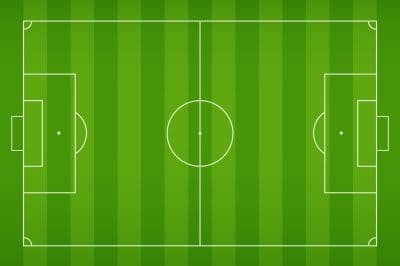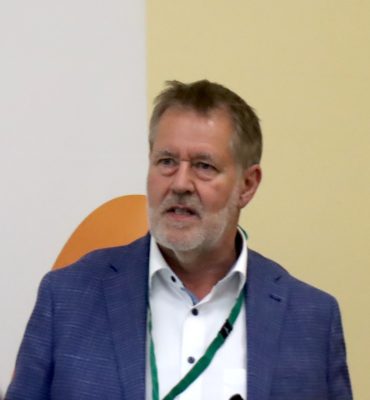IMAGINE for a moment that the world’s entire available agricultural land is represented by a soccer field, just like those in Qatar where Argentine Maestro Lionel Messi is weaving his magic as the championship stages of the World Cup play out.
 Only the penalty area – the small rectangles in front of each goal – would comprise arable land that can grow human-edible food.
Only the penalty area – the small rectangles in front of each goal – would comprise arable land that can grow human-edible food.
The remainer is “absolute grassland”, which cannot be converted into arable land to grow food for humans, because it is either too wet or too dry or too steep or too deficient in soil quality etc.
And, even from the comparatively small area of agricultural land that can grow food that can be directly consumed by humans, livestock are still needed to convert most of what is actually produced on that land into food that is edible for humans.
Agriculture produces biomass that is non-edible for the most part, German professor Willhelm Windisch from the Technical University of Munich, pointed out to the recent Societal Role of Meat conference in Dublin.
The production of every kilogram of plant food that is edible for humans generates another three to five kilograms of biomass that is not edible for humans.

Willhelm Windisch
Even a prospering wheat crop produces straw at amounts that equal the harvested kernels. And when turned into flour one third of the harvest is left as bran. Hence, one kg of white bread produces at least 2 kg of non-edible biomass. Other crops such as legume and oil seeds generate more – for example, one kg of rape (canola) oil entails more than 7 kg of non-edible biomass.
Unrecognised superpower of cattle
Utilising this ‘waste’ biomass to produce human food is one of the often unrecognised superpowers of ruminants.
The absolute grasslands that represent most of the ‘soccer field’ that is the world’s entire available agricultural area are habitats that have evolved with in co-existance with animals over millions of years in symbiosis. Compared to forests, these grasslands are highly productive habitats with high densities of herbivores, quick turnover of biomass and fertilisation of plants via animal manure.
Prof Windisch uses the term ‘circularity’ to describe the role ruminants play in converting non-edible biomass produced from absolute grass lands and cropping ‘waste’ into human edible food.
If simply left to rot on the ground, the 3-5kg of non-edible biomass generated from the production of 1kg of “vegan food”from crops such as wheat, barley, oats, legumes, and oilseeds would continue to generate emissions of carbon and nitrogen.
Cattle produced methane, a strong greenhouse gas but one that had a very short lifetime in the atmosphere, and at constant numbers, ruminants did not increase amospheric methane concentration.
“You can let (the inedible biomass) rot in the field, or you can feed it to the biogas or to the ruminants, it will have emissions,” Prof Windisch said.
“If we do not feed this to animals, the consequence on environment is zero.
“The only thing is we have less food.”
‘Meadow feeds acre’
Feeding the ‘inevitably occurring inedible biomass’ to livestock was a ‘win win’ situation, he said – it convert the biomass into edible meat and milk for humans, while livestock also produce ‘storable organic fertiliser in the form of dung that can effectively double the production of ‘vegan food’ per hectare per year, without competing with the ‘vegan food’ produced.
“Livestock produce manure. There is a whole sentence from farmers. They say: meadow feeds acre. Meadow feeds arable land.”
Chicken production was often held up as highly efficient compared to beef production, but chickens ate ‘vegan food’, while cattle converted non-edible biomass into human food.
If the biomass generated by the production of ‘vegan food’ was not fed to livestock it would delete significant quantities of food that could have been produced without any food competition. It would also require massive intensification of vegan food production, entailing a severe rise in emissions/footprints.
“The vegan agriculture must double the food production on the limited area of arable land and this is simply impossible.”
“Ruminants are the animals to maintain food security.
“The take home message is don’t spoil biomass, neither edible or non-edible.
“Of course we need to maximise the gain of edible biomass from arable land but we would still have a lot of non-edible biomass.
“This we have to use, we should not spoil it, we should make use of it and we can make use of it with livestock.”

Interesting article but the sub-title “Unrecognized superpower of cattle” attracted my attention and makes me ask = Who did not recognize the power of cattle to utilize crop residues and by-products and convert these into good quality food and fertilizer”?? This power is recognized since ages in countries like India and hence ‘Mixed Crop-Livestock production system’ prevails (a small percentage of commercial producers are exceptions).
Goats and Indigenous backyard poultry are also kept in the same manner. With due apologies I mention that it is the technical persons who are late in recognizing the ‘Superpower’ of livestock and usefulness of Traditional Mixed Farming System’.
👏👏👏 Concise clarity of intuition; which makes perfect sense … where, in arid and semi-arid lands, like Australia, the cloven-hooved, large-framed, ruminant-grazers (ie sheep, cattle, goats, etc.) are both looking after the soil by re-cycling waste and ‘tilling’ the soil, whilst also converting otherwise in-edible cellulose contained-in locally adapted plant-Flora, into muscle-mass on the hoof; which may then be processed/transformed into very high protein food 🥩 , that is suitable for human consumption.
It’s a virtuous cycle … in Nature and it just works very well (arguably how the great Savannah Grassland Plains came to be with nomadic herds of Bison and/or Wildebeest traversing migrations) … where also, in a stationary-system, stocking-rates are adapted to the seasons by Graziers/Farmers, and the pastures not over-grazed (ie pressure-on/pressure-off grazing cycles), and even going so far as to de-stock completely with the onset of severe-droughts.
That relationship is harmonic/hyperbolic in Nature; in a logarithmic way … for example, stocking-rates looking through the cycle (LTTC) may range from say 1:10-Acres to 1:30-Acres (at which point you may consider de-stocking) , and the LTTC sustainable stocking rate (SSR) is an Harmonic-Mean of 1:15 … not an Arithmetic-Mean of 1:20.
What’s interesting to me, is how ungrazed-pasture-land degrades from lack of exposure to being grazed … for its not the grasses themselves that add value: but rather the ‘stuff’ (ie herbages) that grows between the tussocks and the biomass in, and of the soil itself; reacting with the ‘rain-response’ that create the roughly 1.00-Kg./day (+/- 0.5) weight-gains … plus the very interactions of the livestock with the soil itself … IMO
Without nutritionally contented lead animals the world would be dangerous and very competitive for available Nutrient rich product.
The range lands would be impassable from bulk dry and green plant matter. View a pasture un grazed for 2 years in a good season. The result, an upswing of feral destructive animals an up swing of soil degradation at tracks leading to water plus uncontrollable fire risk!
If limited farmed meat was available the result a growth in hunted meat along with a black market and illegal weapons.
Great story James and then the sequencing of Carbon by cattle just makes for the benefits of animals to humanity.